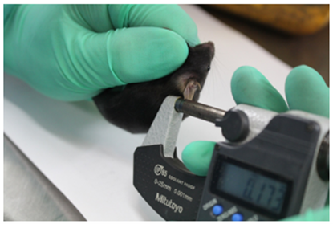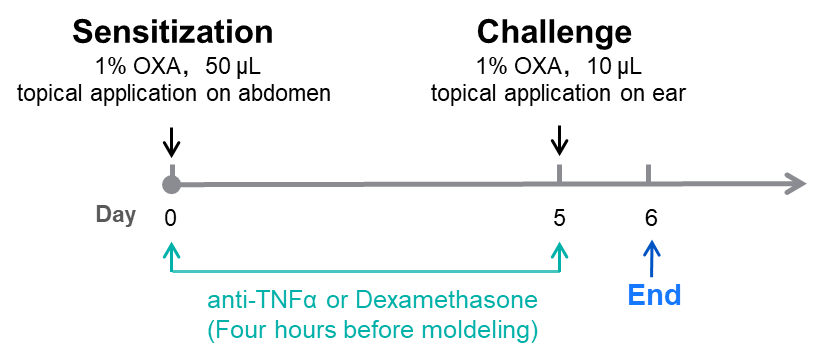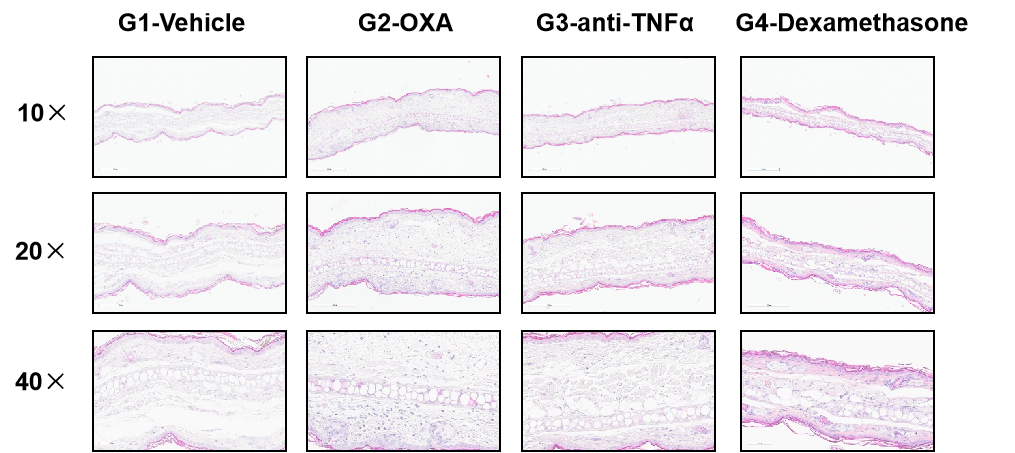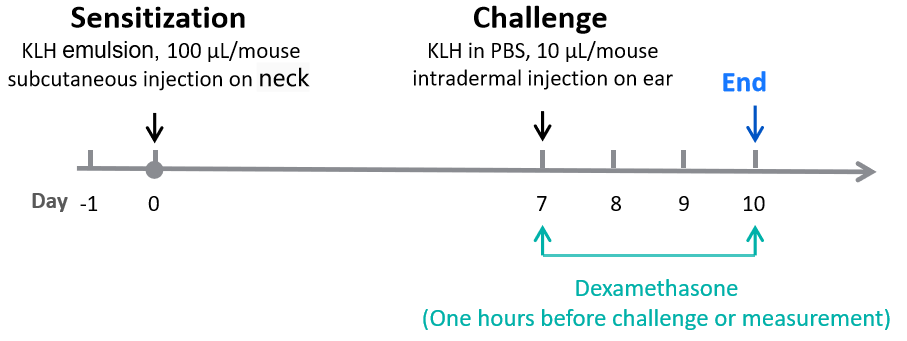Establishment of DTH Mouse Model
- Experimental Animals: C57BL/6, BALB/c, 7-8 weeks old, female
- Modeling reagent: Keyhole Limpet Hemocyanin (KLH)
- Modeling sites: subcutaneous injection (s.c.); intradermal injection (i.d.)
- Modeling method: KLH injection on neck or ear, Sensitization: day 0, s.c. neck; Challenge: day 7, i.d. ear

| Readouts |
| Included tests |
Clinical scores |
Body weight |
| Ear thickness |
| Ear histopathology (H&E) |
Epidermal thickness |
| Optional tests |
Molecular levels |
Protein level (Elisa or Luminex) |
Establishment of DTH Mouse Model Based on C57BL/6 Mice
| Detection indicators |
| Clinical symptoms |
Body weight |
| Ear thickness |
Establishment of DTH mouse model based on C57BL/6 mice. On Day 0, mice are immunized by an intraperitoneal injection with a KLH/CFA/IFA emulsion. On Day 7, following baseline ear thickness measurements, mice are challenged with KLH by intradermal injection (i.d.) into the ear. Additionally, dexamethasone 3 mg/kg in 10ml/kg) were administered subcutaneously for 4 consecutive days, and ear swelling was then measured on Day 8, Day 9, and Day 10.
Efficacy Evaluation of Dexamethasone on KLH-induced DTH model
Dexamethasone alleviates KLH-induced an DTH phenotype in C57BL/6 mice. Body weight (A), (B) Ear Thickness. Values are expressed as mean ± SEM.








